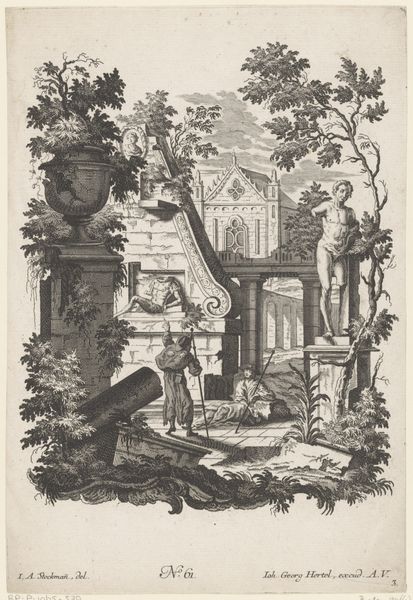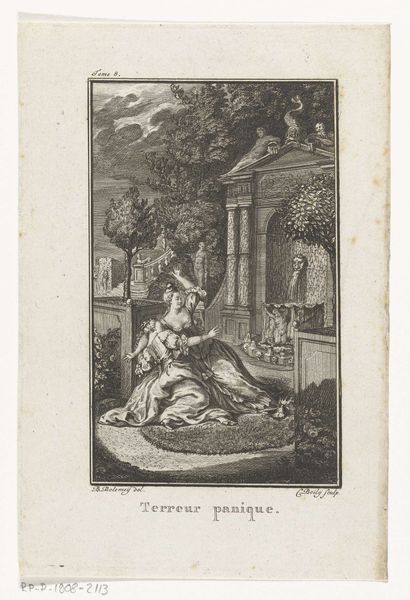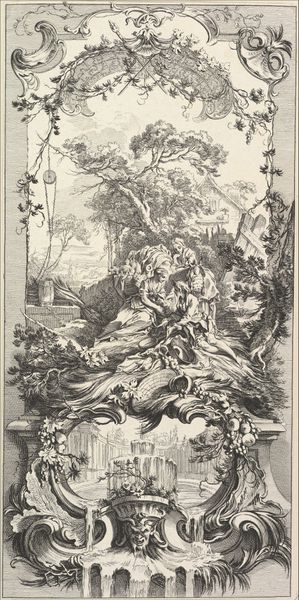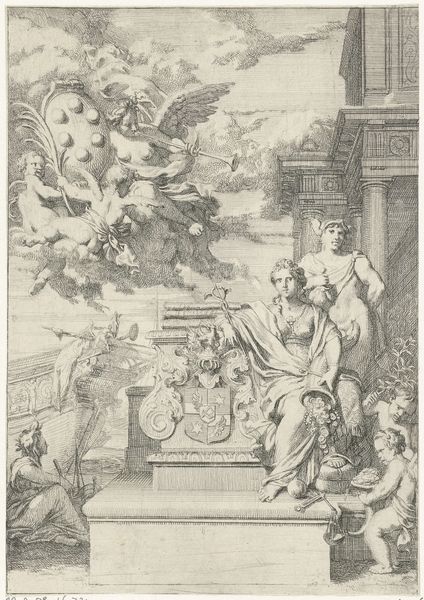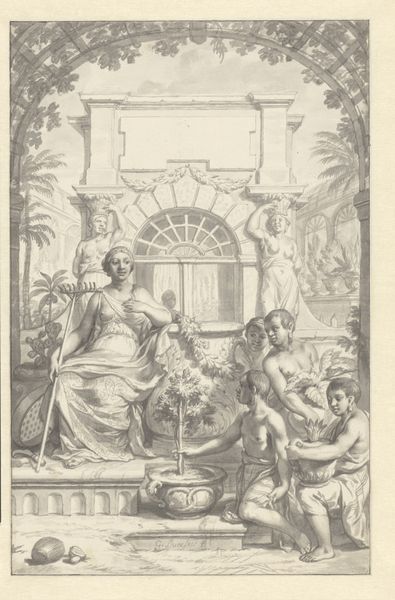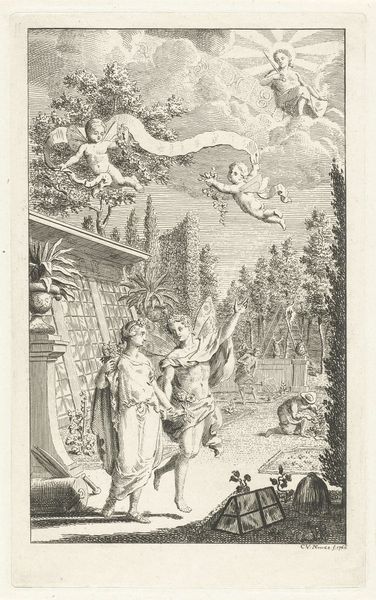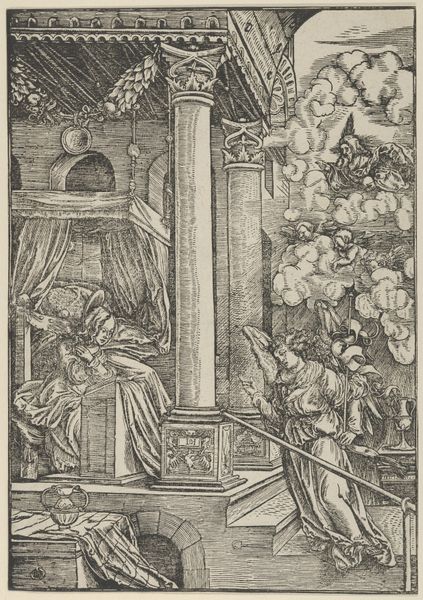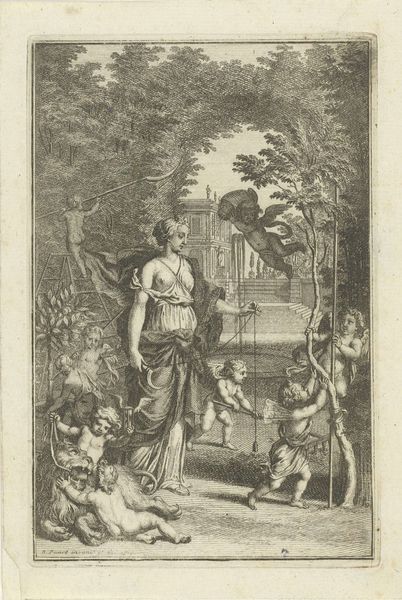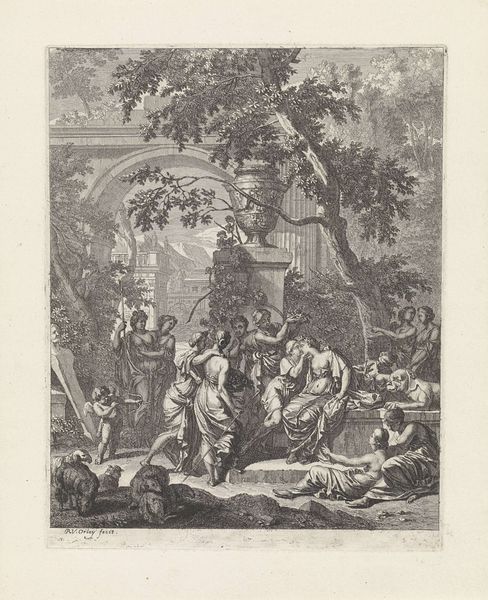
Frontispiece to the Catalogue of Pictures Exhibited in Spring Garden 1761
0:00
0:00
Dimensions: sheet: 7 1/4 x 9/16 in. (18.4 x 1.5 cm)
Copyright: Public Domain
Editor: This is the "Frontispiece to the Catalogue of Pictures Exhibited in Spring Garden" from 1761, by Charles Grignion the First; it is an engraving. It feels like such an odd mix of the classical and the contemporary with this bust of King George but the Union Jack looks randomly abandoned. What can you tell me about it? Curator: It’s fascinating to consider the environment surrounding art production. Hogarth designed it, Grignion engraved it. What statement do you think they're making about the emerging artistic institutions of the time? It seems odd to water some plants labeled painting, architecture, and sculpture; what kind of political position do you think this piece could represent? Editor: Well, the watering certainly does make it look as though someone needs to cultivate the arts in Great Britain; perhaps it is something of a nationalist agenda? Curator: Exactly! Think about it in terms of art’s public role. This was produced to accompany the catalog of the Society of Artists exhibition. Grignion and Hogarth both served as founding governors and directors. Before the Royal Academy, this exhibition in Spring Garden was one of the primary places in London for artists to display and sell their works. In other words, this frontispiece subtly proclaims the exhibition’s and by extension the society's vital importance to the arts. Editor: It sounds like their careers were at stake if the arts did not grow under their organization! It's an incredibly compelling, though rather bizarre, way of saying it. So the somewhat random arrangement reflects a political intent to garner recognition and funding? Curator: Precisely! The ‘random’ Union Jack even signifies what kind of art deserves recognition; English art deserves nourishment, so that England will have better artists! Editor: I will never look at a Frontispiece the same way now. So, I learned that political and cultural contexts truly dictate how pieces of artwork must be decoded. Curator: Absolutely. Consider how art shapes, and is shaped by, socio-political climates, then you can reveal powerful historical meanings.
Comments
No comments
Be the first to comment and join the conversation on the ultimate creative platform.
